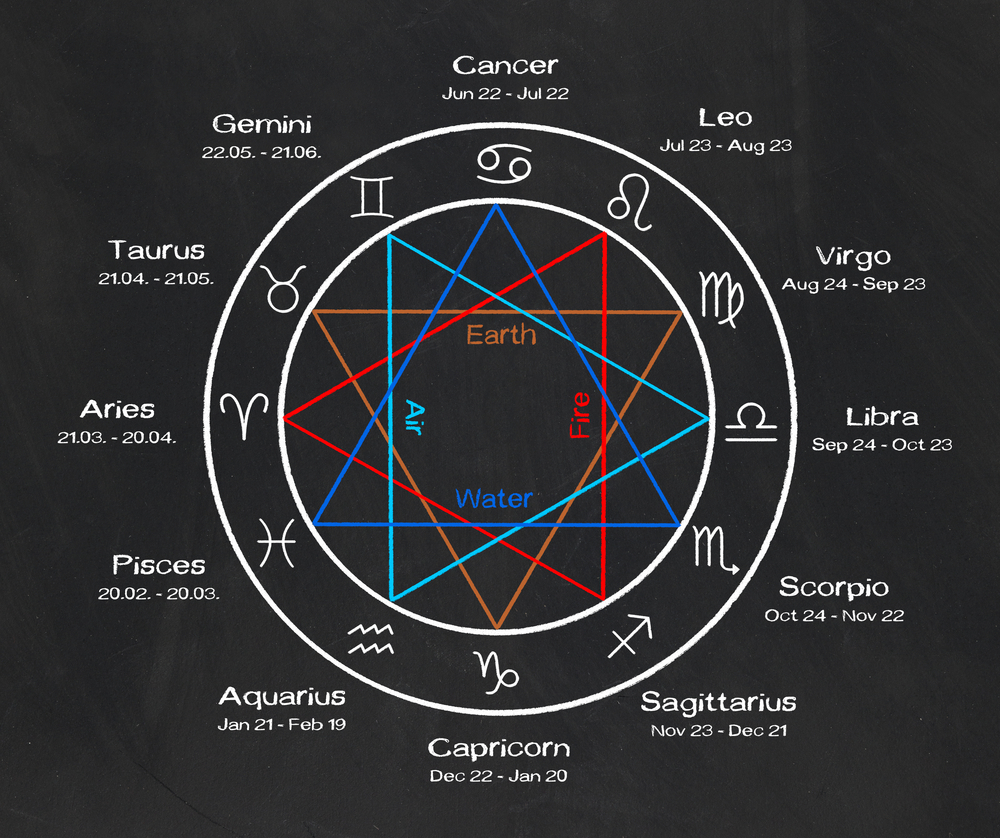
Can the stars predict our romantic futures? Maybe “predict” isn’t the right word. Synastry, or relationship astrology, examines a couple’s birth charts for important insights. Astrologers look at the positions of key planets such as Venus, Mercury, and Mars. But what about our ascendant? Astrologers say that our ascendants show potential relationship golden zones and trouble spots.
A Quick Overview of Rising Signs
You’ve probably heard about ascendants, also known as rising signs. Your ascendant is the zodiac sign that was right above the eastern horizon when you were born. The ascendant also determines the starting point of a birth chart and its horoscope house positions. That’s because the ascendant is always the chart’s ruler and sits in its first house.
AstroStyle describes the ascendant as the sign of “first impressions.” This sign impacts how people see you because it lends some traits to your outward image. A Leo with an Aries ascendant, for instance, may double down on the Lion’s natural confidence. The Ram can also lend a touch of brashness. But a Leo with Capricorn rising may look much different – less flamboyant and more reserved. Capricorn’s ruler Saturn adds restraint, so you may need to get closer to see Leo’s warm and expressive nature.
The All-Important Bi-Wheel Chart
How do you see two birth charts at the same time? You use a bi-wheel chart. In synastry, it’s an indispensable tool that helps astrologers compare a couple’s charts. It consists of two concentric circles: one partner’s chart lies on the inner wheel, and the second partner’s sits on the outer ring. The zodiac signs of both charts align, with planets and points placed in their respective positions on both charts.
The bi-wheel chart helps astrologers see where one partner’s planets sit on the other’s chart. Since their horoscope houses aren’t aligned, Partner A’s first house may sit on Partner B’s third house. That means Partner A’s first house planets appear in Partner B’s third house – and that’s what the astrologer will analyze and interpret.
How Astrological Energies Blend
The blending of energies is a core astrological principle. A celestial body’s energies and those of its resident house or sign will impact each other, creating unique effects. The same is true in synastry – the energies from Partner A’s planet and Partner B’s house position also affect each other. And it’s no different with ascendants.
How could this work out for a couple? Say, for example, that Partner A has Aries rising, and it sits in Partner B’s third house. You may remember that the third house represents communication and thinking. Meanwhile, it also deals with siblings and communities. So what does this mean? Maybe this couple is great at communication, but they may also find it easier to be open with each other. Partner B’s communication style could also influence Partner A, and Partner A may shape a little bit of how Partner B thinks.
The Ascendant and Astrological Aspects
As you may recall, astrological aspects are the angles that planets form with each other. Another AstroStyle guide explains the different types of aspects. In synastry, astrologers examine what aspects between the two chart’s planets could mean within the relationship. An Ascendant-Sun trine, for instance, is a good thing. Trines signal harmony, so a couple with this aspect experiences mutual love and support.
Viewing astrology as a predictive art can limit its potential, many astrologers say. Modern synastry and other astrological practices aren’t intended to show what will happen with certainty. Instead, they can reveal possibilities and truths outside of our reach. You don’t need to believe that the stars shape our futures – or even our daily lives. But synastry may be a useful tool to uncover deep insights about romantic relationships.

